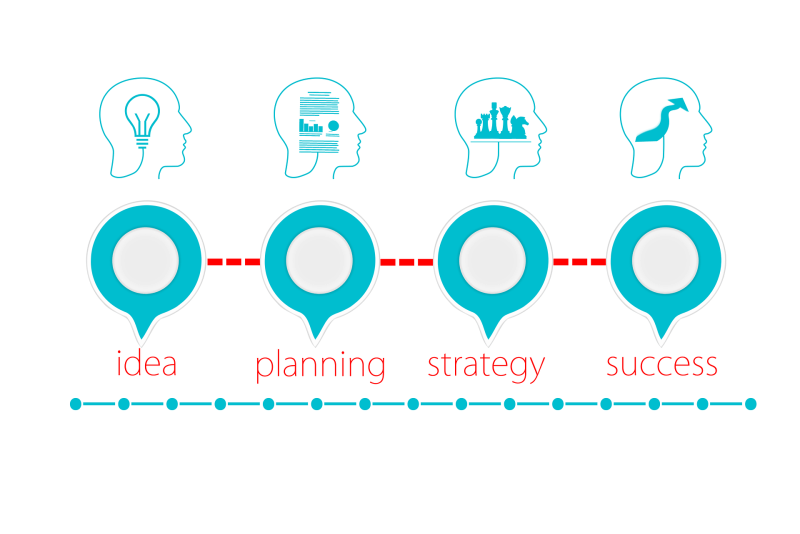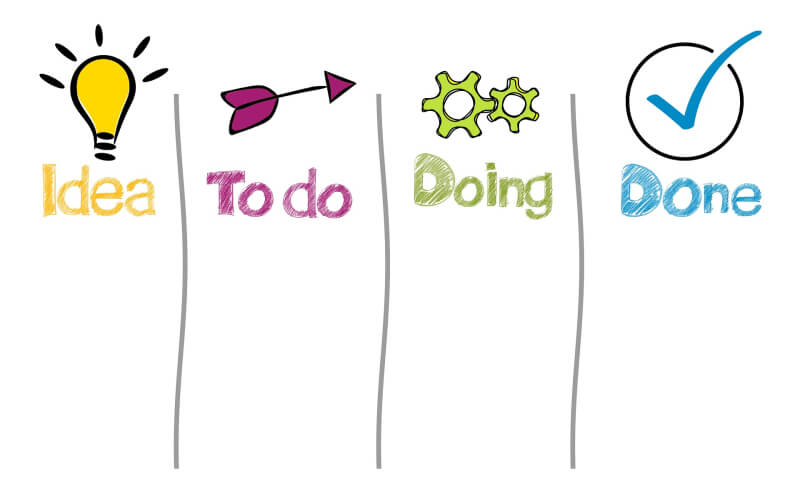- Published in Blog
How to Create an Outline for a Five-Paragraph Essay
A five-paragraph essay is a common assignment in the academic world. Its primary purpose is to evaluate students' writing abilities and gauge their understanding of the subject matter. When approaching this type of writing, it’s important to have a well-defined outline to plan and organize your thoughts. Writing an effective strategy for a five-paragraph essay is essential for crafting a clear and organized essay. The outline serves as a map to guide the writer throughout the entire writing process, from creating an introduction to summarizing the main points in a conclusion. Here are some tips for creating an effective outline that will help you write an excellent five-paragraph essay.
3 Steps to Write an Essay
Drafting essays can be intimidating, but it doesn't have to seem like a tremendous task - if you follow the right steps. Crafting successfully written pieces involves breaking down this process into smaller actions that are easier to manage. Creating an outline for a five-paragraph essay is an important step in writing a successful paper. An outline ensures you do not deviate from the essay’s thesis statement and gives you a structure to work within. We have compiled essential steps to follow so you can approach any writing assignment in an organized way and feel confident about your essay-writing skills!
Step 1: Choose Your Topic
The first step in creating your essay outline is deciding what topic you want to write about. Once you have chosen your topic, ensure it’s something you know enough about and can easily research. This will ensure that when you start writing the essay, you already have some background knowledge of the subject matter, making the task much more straightforward. You can ask students to comment on their interests if you are a teacher and can't choose from various topics. For this purpose, you can also create a worksheet and include an interactive element - a checkbox.

Step 2: Brainstorm Your Ideas
Once you’ve chosen your topic, it’s time to start brainstorming ideas. Think of any key points or reasoning that might be useful to develop in the body paragraphs. Make sure to jot down all of these ideas and keep them organized so that they are easy to find later on when you begin outlining your essay.

Interesting! Research has shown that group brainstorming sessions can be less effective than individual brainstorming. This is because individuals may feel pressure to conform to the ideas of others or feel inhibited in expressing their own ideas. Engaging in individual brainstorming may be beneficial before sharing ideas with others. Therefore, we encourage students to conduct brainstorming first alone and then share their thoughts with the teacher and classmates.
Step 3: Outline Your Essay
Now it's time for the fun part—creating your actual outline! Start by breaking down each section of your paper into subsections if necessary (e.g., introduction, body paragraphs 1-3, conclusion). Then take each subsection and list all the points or facts included in each one. Make sure to include any transitions or signposts to help guide readers through your argument (e.g., “First…Second…Third…Finally…In conclusion”). This should give you a clear overview of how each part should come together when writing out the final draft of your paper.

The second stage is writing: create a thesis statement or main idea related to your topic, which will serve as your essay’s focus — all other details in your essay should directly contribute to this statement. Your thesis should not be too broad or too narrow; instead, it should be concisely stated to summarize the content of your essay accurately. A good starting point is clearly articulating your central argument and previewing the points you'll make supporting your opinion. This will give you and your readers a clear direction for the essay and allow you to expand on key points while keeping topic cohesion accessible. Once you have established a thesis, prewrite each body paragraph by brainstorming how it will support the thesis.

Lastly, end your Five Paragraph Essay with a strong conclusion that ties back up all the content in the paper using multiple points. Remember: while outlining can be time-consuming, taking those extra steps can ensure that the rest of your five-paragraph writing process will run more smoothly and successfully!
If you want to assign an essay to your students, you can use one of our templates on Edform for free, and with a pro subscription, your options will double. You will be able to edit any worksheets from the public library and add many premium interactive features. New users can get 1 trial month of Pro subscription and experience all the learning benefits for teachers and students.

An effective outline can be incredibly helpful when writing a five-paragraph essay. It allows you to plan what information should go into each section and how those sections should flow together logically and cohesively to make a compelling argument or present information clearly and concisely. By following these steps—choosing a topic, brainstorming ideas, and creating an outline—you can easily create a well-crafted five-paragraph essay!
How to Use Disney Theme Worksheets in Your Classroom
Are you looking for a fun and engaging way to get your students interested in learning? Incorporating interactive worksheets with a Disney theme is one of the best ways to do that! This post will give you creative ideas for bringing colorful Disney-themed activities into the classroom. Disney worksheets will take your students on an adventure while they foster critical thinking skills, self-expression, and problem-solving! Read on to learn more about how interactive Disney worksheets can keep kids interested and engaged during online education!
Bringing History to Life: How Interactive Online Worksheets Can Enhance Your History Lessons
Do you feel like your history lessons have become too formulaic and boring? Look no further than interactive online worksheets! Our free worksheets are designed to bring excitement and energy back into the classroom by providing a fun, educational way for students to learn about history. Learn the benefits of interactive history lessons and try them today for an innovative approach to liven up any lesson plan!
Discover the 7 Reasons Why You Should Try Edform
Edform is the perfect tool for teachers looking to streamline their workload and teach more efficiently. Through its comprehensive suite of features like Lessons Builder, Automate Grading System, Activity Monitoring, and Generate Reports, you'll be able to manage your class better while engaging students in meaningful activities. This blog post will explore 7 compelling reasons why all educators should consider using Edform.
The Benefits of Using Edform for Online ESL Tutoring
ESL tutoring can be a really rewarding experience, especially if you're helping people learn a new language. However, it can also be tedious and time-consuming for nontech teachers. That's where Edform stands out, with its user-friendly interface, easy navigation, and the best interactive elements for your esl worksheets. Stay tuned to read more about the benefits of using Edform for online ESL tutoring!
Edform's User-Friendly Interface: The Perfect Solution for Teachers with Little Tech Experience
Are you tired of using platforms that are overly complicated and filled with spam? If so, you're not alone. At Edform, we understand this problem and aim to provide a user-friendly experience with a simple and easy-to-learn interface. In this blog post, we'll take a closer look at Edform's convenient interface and explore how it can help teachers with little tech experience create engaging interactive online activities that will inspire and motivate their students.
The Role of Interactive Lessons in Project-Based Learning: Edform's Features and Resources
In this article, we'll explore the role of interactive lessons in project-based learning and how Edform's features and resources can help teachers create engaging and effective lessons for their students. So, whether you're a seasoned educator or just starting, read on to learn how Edform can help you enhance your PBL curriculum and make learning more fascinating and enjoyable for your students.